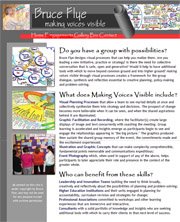The leadership in a distinguished organization seeks to advanc e a large-scale change initiative. Among the foods for thought presented is John Kotter’s “The Eight Step Process for Successful Change.” The first step: “Create a sense of urgency. Help others see the need for change and the importance of acting immediately.”
e a large-scale change initiative. Among the foods for thought presented is John Kotter’s “The Eight Step Process for Successful Change.” The first step: “Create a sense of urgency. Help others see the need for change and the importance of acting immediately.” For a couple of years I co-led the Step III workshop of the Planning Institute of the Society for College and University Planning, and Kotter’s book Leading Change was part of our framework. We occasionally debated the nature of the sense of urgency – does it stem from threats or from aspirations? My own reading of Kotter was that he saw a need to represent a negative force and stimulate our survival instincts.
My path subsequently wound through Peter Senge’s Fifth Discipline and the Society for Organizational Learning. Systems thinking would show that using a negative urgency to stimulate change will make that change unsustainable. If the idea is to engender preferred behavior to eliminate a threat – perceived or otherwise - the lifespan of that behavior is in doubt once the threat is eliminated. The best examples are in colleges and universities. There the preferred stimulus for change is a deficit-orientation, generally arising from assessment. In spite of growing attention to the process, things remain as described by a friend in the Center for Creative Leadership: “It’s easier to move a cemetery than to change a university.”
In the Step III workshop we also used Malcolm Gladwell’s Blink. One of the stories we did not discuss was a tragic example of how our focus narrows in the face of a threat. It can be argued that if the change needed is adaptive as opposed to merely technical – changing the way we think as opposed to just changing what we do – it is imperative that we widen our focus. According to Barbara Fredrickson’s work our focus widens and narrows as the positivity of our situation varies. A widening of focus is not only critical to our receptiveness toward new ideas, but it also  drives an essential component of long term success: our creativity.
drives an essential component of long term success: our creativity.
So, in what ways might a positive sense of urgency arise? It can begin with a question as simple as “What do we want more of?” It’s a simple phrase that holds the past, the present and the future together interactively, and it sets up a series of dialogues that engage the entire system. Once the usual conversations begin to change, the leadership can breathe normally in the confidence that things are on their way.








